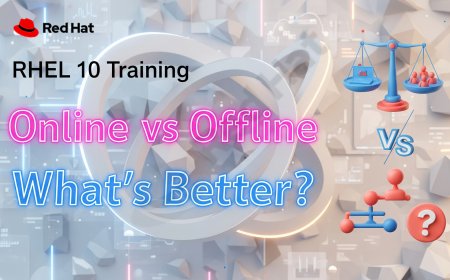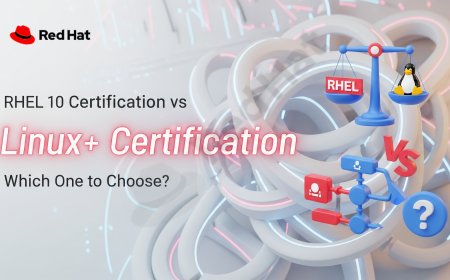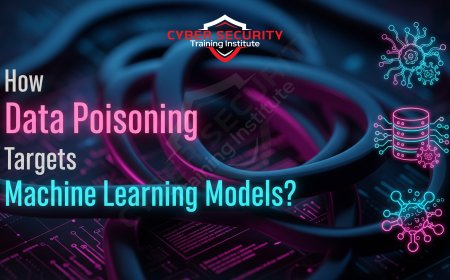What Are the Limitations of AI-Powered Cybersecurity Tools Like Microsoft Security Copilot?
In an era where cyberattacks are becoming more sophisticated, AI-powered cybersecurity tools like Microsoft Security Copilot have emerged as powerful allies for security teams. These tools promise to detect threats faster, automate responses, and simplify complex tasks, making them invaluable in the fight against cybercrime. However, no solution is perfect. While AI tools offer cutting-edge advantages, they also come with limitations that can impact their effectiveness. In this blog post, we’ll dive into the challenges and constraints of AI-powered cybersecurity tools like Microsoft Security Copilot, helping businesses understand where these solutions shine and where they fall short.

Table of Contents
- Introduction
- What is Microsoft Security Copilot?
- Why AI-Powered Cybersecurity Tools Matter
- Key Limitations of AI-Powered Cybersecurity Tools
- Dependence on Data Quality
- False Positives and Negatives
- Integration Challenges
- Skill and Training Requirements
- Cost Considerations
- Vulnerability to Adversarial AI
- Comparison of AI Cybersecurity Limitations
- Mitigating the Limitations
- Conclusion
- Frequently Asked Questions
Introduction
Cybersecurity is a constant battle against evolving threats, from ransomware to phishing scams. AI-powered tools like Microsoft Security Copilot are designed to give security teams an edge by analyzing vast amounts of data, predicting threats, and automating responses. These tools are transformative, but they’re not a silver bullet. Limitations like data dependency, false positives, and high costs can hinder their effectiveness. Understanding these challenges is crucial for organizations looking to adopt AI-driven security solutions. In this post, we’ll explore the key limitations of tools like Security Copilot, why they occur, and how businesses can navigate them.
What is Microsoft Security Copilot?
Microsoft Security Copilot is an AI-powered tool that assists security teams in detecting, analyzing, and responding to cyber threats. Built on OpenAI’s GPT-4 and integrated with Microsoft’s security suite, including Defender XDR and Sentinel, it processes over 78 trillion daily security signals to provide real-time insights. Security Copilot uses natural language processing to answer queries, summarize incidents, and guide teams through remediation steps, making it accessible even to less experienced analysts. However, like all AI tools, it has limitations that can affect its performance in real-world scenarios.
Why AI-Powered Cybersecurity Tools Matter
AI-powered cybersecurity tools are critical because they address the limitations of traditional methods. Unlike signature-based antivirus software, AI tools like Security Copilot:
- Analyze patterns to detect unknown threats.
- Automate repetitive tasks, reducing response times.
- Provide actionable insights through natural language interfaces.
Despite these strengths, AI tools face challenges that can limit their effectiveness, especially in complex or resource-constrained environments.
Key Limitations of AI-Powered Cybersecurity Tools
While AI tools like Security Copilot offer advanced capabilities, they come with several limitations that organizations must consider:
- Data Dependency: AI relies heavily on high-quality data to function effectively.
- False Positives/Negatives: Incorrect alerts can overwhelm or mislead teams.
- Integration Challenges: Compatibility with existing systems can be complex.
- Skill Requirements: Teams need training to use AI tools effectively.
- Cost: High costs can be a barrier for smaller organizations.
- Adversarial AI: Hackers can exploit AI vulnerabilities to evade detection.
Let’s explore each of these limitations in detail.
Dependence on Data Quality
AI tools like Security Copilot rely on vast amounts of data to train their models and make accurate predictions. If the input data is incomplete, outdated, or biased, the tool’s effectiveness suffers. For example:
- Incomplete data from unmonitored systems can lead to missed threats.
- Biased training data may cause the AI to overlook certain attack patterns.
- Lack of real-time data can delay threat detection in fast-moving environments.
Organizations must ensure comprehensive data collection and integration to maximize the tool’s potential, which can be resource-intensive.
False Positives and Negatives
AI tools can sometimes misinterpret data, leading to false positives (flagging benign activity as malicious) or false negatives (missing actual threats). This happens because:
- Complex environments may produce ambiguous patterns that confuse AI models.
- Overly sensitive settings can trigger unnecessary alerts, causing alert fatigue.
- New or subtle threats may blend into normal activity, evading detection.
For instance, Security Copilot might flag a legitimate software update as suspicious, wasting time, or fail to detect a sophisticated phishing attack, leaving systems vulnerable.
Integration Challenges
Integrating AI tools with existing security infrastructure can be a hurdle. Security Copilot works seamlessly with Microsoft’s ecosystem, but challenges arise when:
- Organizations use non-Microsoft tools, requiring complex integrations.
- Legacy systems lack compatibility with modern AI platforms.
- Multi-cloud or hybrid environments demand additional configuration.
These integration issues can delay deployment and increase costs, especially for organizations with diverse IT setups.
Skill and Training Requirements
While Security Copilot’s natural language interface is user-friendly, maximizing its potential requires skilled staff. Limitations include:
- Teams need training to interpret AI-driven insights and avoid misjudgments.
- Junior analysts may struggle with advanced features without guidance.
- Organizations with limited cybersecurity expertise may underutilize the tool.
Without proper training, teams may miss critical alerts or misconfigure the system, reducing its effectiveness.
Cost Considerations
AI-powered tools like Security Copilot can be expensive, especially for small businesses. Costs arise from:
- Licensing fees for the tool and associated Microsoft services.
- Compute resources, such as Security Compute Units (SCUs) in Azure.
- Training and integration expenses to deploy the tool effectively.
For organizations with tight budgets, these costs can make adoption challenging, even if the tool saves money in the long run by preventing breaches.
Vulnerability to Adversarial AI
Hackers are increasingly using AI to craft attacks that can evade AI-powered defenses. This “adversarial AI” poses a unique challenge:
- Attackers can manipulate data to trick AI models into ignoring threats.
- Subtle changes to malware can bypass behavioral detection.
- AI-driven attacks evolve rapidly, requiring constant updates to defense models.
For example, a hacker might alter a phishing email’s structure to appear benign to Security Copilot, slipping through its defenses.
Comparison of AI Cybersecurity Limitations
| Limitation | Impact | Example Scenario |
|---|---|---|
| Data Dependency | Missed threats due to poor data | Incomplete logs miss insider threat |
| False Positives/Negatives | Alert fatigue or missed attacks | Legitimate update flagged as malware |
| Integration Challenges | Delayed deployment, higher costs | Legacy system incompatibility |
| Skill Requirements | Underutilized features | Junior analyst misinterprets alert |
| Cost | Inaccessible for small businesses | High licensing fees strain budget |
| Adversarial AI | Evasion of detection | Manipulated malware bypasses AI |
Mitigating the Limitations
While these limitations are significant, organizations can take steps to address them:
- Improve Data Quality: Ensure comprehensive data collection and regular updates to training datasets.
- Tune AI Models: Adjust sensitivity settings to reduce false positives and improve detection accuracy.
- Invest in Training: Provide ongoing education for teams to maximize tool effectiveness.
- Plan Integration: Work with vendors to ensure compatibility with existing systems.
- Monitor Costs: Use pay-as-you-go models or prioritize critical use cases to manage expenses.
- Stay Ahead of Adversarial AI: Regularly update AI models to counter evolving attack techniques.
By addressing these challenges proactively, organizations can unlock the full potential of tools like Security Copilot.
Conclusion
AI-powered cybersecurity tools like Microsoft Security Copilot are transforming how organizations defend against cyber threats, offering speed, automation, and predictive capabilities. However, their limitations—such as data dependency, false positives, integration challenges, skill requirements, costs, and vulnerability to adversarial AI—can hinder their effectiveness. By understanding these constraints and taking steps to mitigate them, businesses can better leverage these tools to strengthen their security posture. While not perfect, AI cybersecurity solutions remain a critical asset in the fight against modern threats, provided organizations approach their adoption with clear strategies and realistic expectations.
Frequently Asked Questions
What is Microsoft Security Copilot?
It’s an AI-powered tool that helps security teams detect, analyze, and respond to cyber threats using natural language and Microsoft’s threat intelligence.
Why do AI cybersecurity tools rely on data quality?
AI tools need comprehensive, accurate data to train models and detect threats effectively.
What are false positives in AI cybersecurity?
False positives occur when benign activity is flagged as malicious, causing alert fatigue.
What are false negatives in AI cybersecurity?
False negatives happen when actual threats are missed, leaving systems vulnerable.
Why is integration a challenge for AI tools?
Legacy systems or non-compatible tools can complicate deployment and increase costs.
Do AI cybersecurity tools require skilled staff?
Yes, teams need training to interpret AI insights and configure systems correctly.
Are AI cybersecurity tools expensive?
Yes, licensing, compute resources, and training can be costly, especially for small businesses.
What is adversarial AI?
Adversarial AI involves hackers using AI to manipulate data and evade detection by AI tools.
Can AI tools like Security Copilot prevent all cyberattacks?
No, while effective, they can miss subtle or novel threats due to limitations like false negatives.
How can organizations reduce false positives?
Tuning AI models and improving data quality can minimize unnecessary alerts.
Is Security Copilot compatible with non-Microsoft tools?
Yes, but integration with third-party tools may require additional configuration.
Can small businesses afford Security Copilot?
Its pay-as-you-go model helps, but costs may still be a barrier for smaller organizations.
How does poor data quality affect AI tools?
Incomplete or biased data can lead to missed threats or inaccurate predictions.
Can AI tools replace human analysts?
No, they augment human expertise but require oversight to ensure accuracy.
How do hackers exploit AI cybersecurity tools?
Hackers use adversarial AI to manipulate data or create attacks that evade detection.
Does Security Copilot support compliance?
Yes, but organizations must ensure proper configuration to meet regulations like GDPR.
Why do AI tools need training?
Training helps teams understand AI insights and avoid misconfigurations or errors.
Can AI tools handle zero-day attacks?
They’re better than traditional tools but may miss sophisticated zero-day exploits.
How can organizations manage AI tool costs?
Using pay-as-you-go models or prioritizing critical use cases can help control expenses.
How do I get started with Security Copilot?
Sign up for an Azure account, provision Security Compute Units, and access it via the Microsoft Security portal.
What's Your Reaction?
 Like
0
Like
0
 Dislike
0
Dislike
0
 Love
0
Love
0
 Funny
0
Funny
0
 Angry
0
Angry
0
 Sad
0
Sad
0
 Wow
0
Wow
0
















